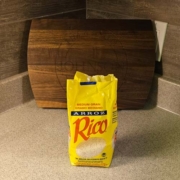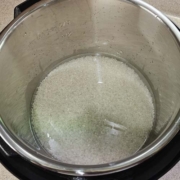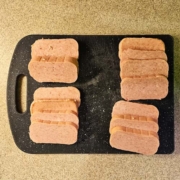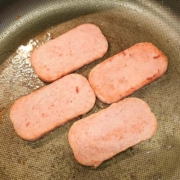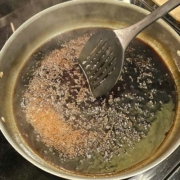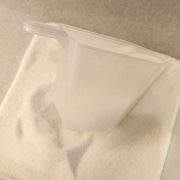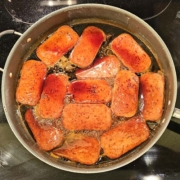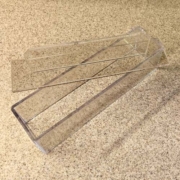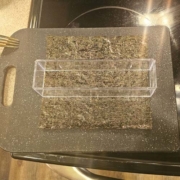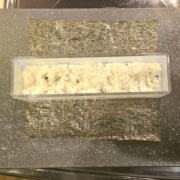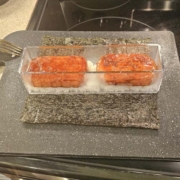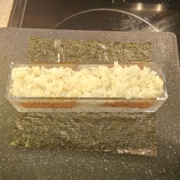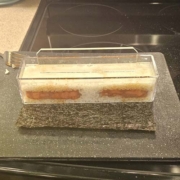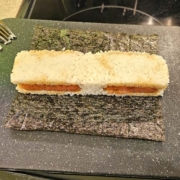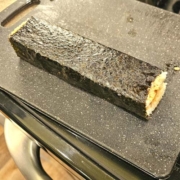If you haven’t seen our previous post on Kaitlyn cooking Loco Moco, click here.
SPAM Musubi: Authentic Hawaiian
Our friend, fellow foodie, culinary scholar, and traveling chef, Kaitlyn is back to TnF Farms to cook authentic Hawaiian for us again! She told us tonight, we are in for a treat she enjoyed as a kid growing up in Hawai’i. SPAM musubi is an authentic Hawaiian staple that combines elements of Japanese and American cuisine. It’s a tasty and portable dish that features SPAM, as a key ingredient. The dish checks all the boxes. It’s sweet, salty and filling. SPAM musubi is so common in Hawai’i, that you can buy it from a convenience store. It’s often enjoyed as a snack or light meal, and it has become a symbol of Hawaiian cuisine.
Origins of SPAM Musubi
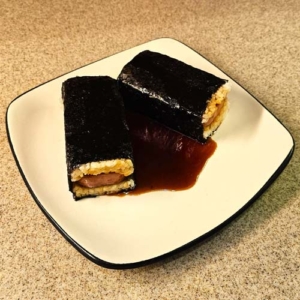 SPAM musubi’s origin can be traced back to the influence of Japanese rice ball (onigiri) culture in Hawai’i, combined with the availability and popularity of SPAM in the region. The dish is a unique fusion of Japanese and American flavors and culinary traditions.
SPAM musubi’s origin can be traced back to the influence of Japanese rice ball (onigiri) culture in Hawai’i, combined with the availability and popularity of SPAM in the region. The dish is a unique fusion of Japanese and American flavors and culinary traditions.
The concept of wrapping rice with seaweed, known as nori, is a common practice in Japanese cuisine. The Japanese have a long history of making onigiri, which are rice balls often filled with various ingredients and wrapped in seaweed. Japanese immigrants brought these culinary traditions to Hawai’i.
The combination of Japanese rice ball traditions and the local popularity of SPAM likely led to the creation of SPAM musubi. The dish embodies a fusion of Japanese and American ingredients and culinary techniques, resulting in a creation that is uniquely Hawaiian.
Who doesn’t love SPAM?
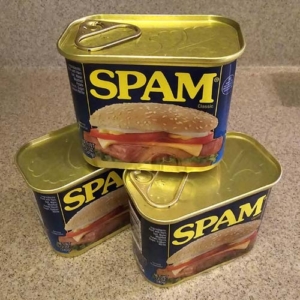 Tim and I both grew up eating SPAM. We have yet to meet anybody that doesn’t like SPAM. SPAM is still a popular choice at our house for breakfast with a side of TnF Farms non-GMO farm fresh eggs. The Hawaiian obsession with canned SPAM (a brand of canned precooked meat made by Hormel Foods Corporation) has its roots in historical and cultural factors. SPAM became popular in Hawai’i during and after World War II, and it has since become a staple in Hawaiian cuisine.
Tim and I both grew up eating SPAM. We have yet to meet anybody that doesn’t like SPAM. SPAM is still a popular choice at our house for breakfast with a side of TnF Farms non-GMO farm fresh eggs. The Hawaiian obsession with canned SPAM (a brand of canned precooked meat made by Hormel Foods Corporation) has its roots in historical and cultural factors. SPAM became popular in Hawai’i during and after World War II, and it has since become a staple in Hawaiian cuisine.
During World War II, the U.S. military stationed many servicemen in Hawai’i. SPAM was a convenient and shelf-stable source of protein that could be transported easily. SPAM is an affordable source of protein for many Hawaiian residents, especially in the post-war era. Its long shelf life and versatility made it a practical choice for households on a budget. Hawaiians are known for their creativity in adapting different culinary influences. So SPAM found its way into traditional Hawaiian dishes. It became a key ingredient in local recipes, like SPAM musubi, SPAM fried rice, and SPAM and eggs.
Let’s start cooking
SPAM Musubi has all kinds of different takes. She makes her style as a finger food so the entire musubi is wrapped with seaweed. Some variations use just a strip of seaweed so the SPAM musubi looks like a SPAM sushi. Kaitlyn broke out our rice cooker and started a 1:1 combination of rinsed white rice and water. She said this would require sticky rice. Instant rice will not work. Depending on the amount of musubi you want to make, you typically need 2 cups of uncooked rice per can of SPAM.
She asked us what we wanted for SPAM to rice ratios. Tim wanted more meat than rice. I wanted more rice than SPAM because I wanted lots of the sauce to go into the rice. Kaitlyn started a skillet heating and sliced SPAM into various thicknesses.
Kaitlyn then fried all of the SPAM until slightly crispy and set it aside.
She then added a cup of soy sauce to the skillet. Once the soy sauce got up to temp, she started working sugar into the sauce until she got to the right combination of salty to sweet. She mentioned if you get your sauce too sweet, just add more soy sauce to your skillet.
Once all of the sugar dissolved into the sauce, she put the cooked SPAM back into the pan and bathed the slices in the sauce until they were all completely covered. She simmered them occasionally flipping the slices of SPAM until the rice cooker beeped that it was done. This was about 10 minutes.
SPAM musubi assembly
To make authentic SPAM musubi, you need a musubi press mold. These can be picked up from Amazon for less than $15. You don’t have to use a press mold as you can just roll the ingredients in the Nori seaweed. The press mold will help the finished product keep its shape and make it more of a hand-held food.
Kaitlyn starts by putting an entire sheet of Nori seaweed with the smooth or shiny side facing down.
A layer of hot steamed rice goes down. Then 2 pieces of SPAM from the skillet.
Next, the final layer of rice goes on top. She then presses the rice to compact the ingredients.
While pushing down on the top of the press, she lifts the sides up and gently pulls the top away. Then folds the seaweed over the top, and flips the musubi over. The moist, hot rice seals the roll. I asked her to add some sauce to my roll before she folded it up. Kaitlyn said the musubi would fall apart if I did. We get to dip the musubi in the sauce.
Let’s eat
Once plated, Kaitlyn added a couple of spoonfuls of the sauce from the skillet to the plate. She said, to dip the SPAM musubi in the sauce and take a bite. This was an addictive meal! The salty fat of the SPAM, the sweet and salty dance of the sauce. All in a seaweed-wrapped, rice hand-held. Good thing she made 2 cans because everybody had seconds!
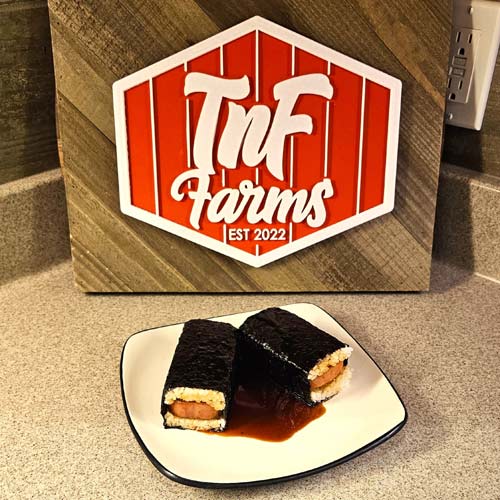
SPAM Musubi: Authentic Hawaiian
- 1 can of SPAM
- 2 cups of white rice
- 1 cup of soy sauce
- 1 cup of sugar
- 1 package of nori seaweed
Directions
- Combine rinsed rice with water at a 1:1 ratio and cook in a rice cooker
- Pan-fry SPAM slices and set aside
- Pour soy sauce and sugar into the pan and cook on medium-low heat until combined
- Add cooked SPAM slices into pan of sauce and simmer for 10 minutes
- Press cooked rice and SPAM in musubi press mold and wrap in seaweed

